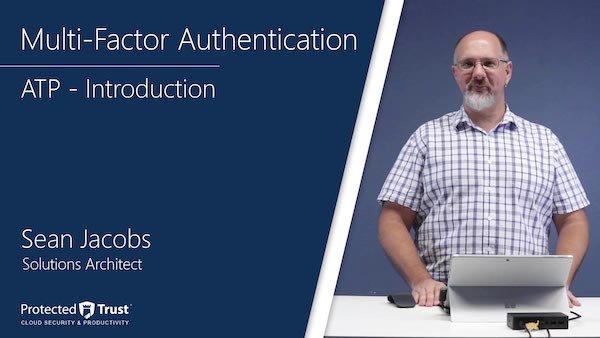As time goes on, the technology we use to accomplish tasks becomes ever more advanced. For example, at the start of the millennium, the FCC defined internet speeds of 200 Kbps as “high-speed.” In 2018, the average internet speed in the USA, according to data cited by the NCTA, was 93.98 Mbps. Just for reference, 200 Kpbs is equal to 0.2 Mbps—meaning that the average internet speed in the U.S. today is around 469.9 times faster than so-called “high-speed” internet less than two decades prior.
This increased speed and capability has been used to power numerous innovations over the years. For example, cloud-based enterprise software solutions, such as Office 365, can easily be delivered via the internet. Additionally, high-definition video streaming services, which would once have been impossible to manage, are now a daily fact of life.
However, whenever there’s a new advance in information technology, there are those who would take advantage of such changes for illicit gain. Cybercriminals are constantly working to create new cyber threats that organizations of all types have to deal with. These threats target systems and people alike.
To protect your sensitive data, your customers, and your organization, it’s important to leverage advanced threat protection solutions. What is advanced threat protection? Can you apply it to cloud-based enterprise applications like Office 365?
What is Advanced Threat Protection?
Advanced threat protection (ATP) is the name for security solutions that are designed to counter sophisticated cyber threats that target sensitive data and systems. This includes (but is not limited to) advanced persistent threats (APTs), phishing attacks, man-in-the-middle attacks, and ransomware.
This term can be broadly applied to a number of different cybersecurity tools, policies, and procedures that an organization might use. For the purpose of this article, we’ll focus on advanced threat protection for Office 365 and what that entails.
If you were to search for something like “advanced threat protection Office 365,” one of the top results would be Microsoft’s own Office 365 Advanced Threat Protection service article. As noted in the article, this ATP service is designed specifically to counter “malicious threats posed by email messages, links (URLs) and collaboration tools.”
Why Would You Need Office 365 Advanced Threat Protection?
So, why would you need an Office 365 Advanced Threat Protection plan for your business? The primary reason would be to protect your business’ sensitive data and IT assets. Some benefits of using ATP for Office 365 include:
- Email Attachment/Link Safety Verification. Malicious attachments and links in emails are a common attack vector for cybercriminals. With Advanced Threat Protection, you can use the ATP Safe Attachments and Safe Links features to check the attachments and URLs in your organization’s emails to detect and weed out these threats. This can block a vast array of security threats.
- Anti-Phishing Security. In addition to checking links and attachments in Office 365 emails, Microsoft’s ATP plan uses machine learning solutions to analyze the contents of incoming emails. These tools can learn to identify phishing attacks, and to rectify them before they’re able to cause harm. You can even prevent impersonation attacks (spear-phishing, business email compromise, etc.) by using a fixed list of users/domains and mailbox intelligence.
- File Checking for SharePoint, OneDrive, and Microsoft Teams. Could there be a malicious file in one of your cloud-based file sharing solutions? With Office 365 Advanced Threat Protection, you can have an integrated solution for your Microsoft file sharing tools that can help you find and eliminate malicious files that may compromise your information security.
- Automated Investigation and Response of Threats. ATP Plan 2 for Office 365 comes with an automated investigation and response (AIR) solution. This AIR solution can automatically respond to alerts, investigating and remediating potential security breaches instantly. This greatly increases speed of response to security incidents—reducing the impact of cyberattacks.
- Proactive Threat Intelligence. Another ATP Plan 2 feature that can help you be more proactive in your cyber threat response is the Threat Tracker. These informative widgets provide information about cybersecurity issues—helping to increase awareness so you can close security gaps and prepare effective countermeasures to predominant threats before they can cause breaches.
These security features all help to increase the safety of your organization’s data and IT assets. However, without the proper configuration and management, the benefits of these features can be severely hampered.
Optimally controlling these advanced threat protection features required detailed knowledge and knowhow. This is where an Office 365 Advanced Threat Protection Security Course can help.
Take the Office 365 Advanced Threat Protection Security Course
Protected Trust is proud to offer an online security course that allows users to self-pace and self-direct their learning curriculum to meet their needs. In the course, Office 365 Security Administrator Sean Jacobs provides insight into how to use the latest Office 365 Advanced Threat Protection features and tools to better protect your organization from cybercrime.
Some of the specific threats the course will help you learn to counter include:
- Spam;
- Phishing attacks;
- Malware;
- Viruses;
- Malicious link strategies; and
- Other “Zero Hour” Threats/Vulnerabilities.
Hackers and other cybercriminals are constantly working to break your security—learn how to use the tools you need to thwart them today!
{{cta(’31e53ad0-858c-4b4b-b6a2-00da4238bf2f’)}}









